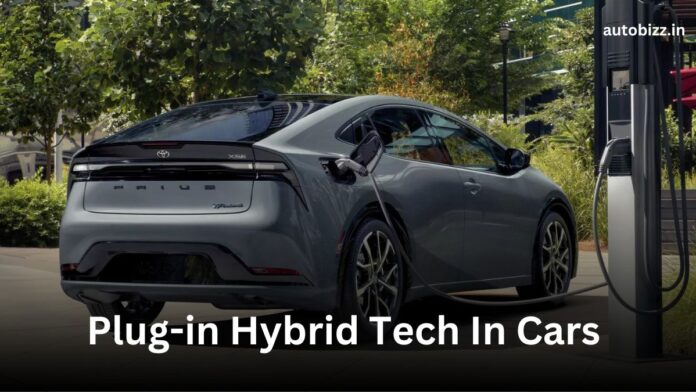In recent years, the Indian automotive market has seen a surge in the number of new hybrid cars, with the majority coming from companies such as Maruti, Toyota, and Honda. And they are divided into two types: mild hybrids and strong hybrids.
However, there is another type of hybrid automobile called plug-in hybrid vehicles (PHEVs), which are mostly found in the premium class. This is how they function.
How Plug-in Hybrid Works

Unlike mild and strong hybrid systems, which have a battery pack charged only by the engine, plug-in hybrid vehicles, as the name implies, may be connected into a charger to recharge their battery pack.
Their operation is similar to that of powerful hybrid vehicles such as the Maruti Grand Vitara and Toyota Innova Hycross, in which a bigger battery pack and electric motor configuration help the engine achieve greater economy. Furthermore, because they have a larger battery pack, they provide a longer pure-EV range in cities.
Plug-in hybrid vehicles often feature more powerful electric motors to take the burden off the engine, resulting in much greater economy. The BMW XM, for example, offers a stated fuel economy of 61.9 km/l and a pure EV range of up to 88 km.
Differences Between Hybrid & Plug-in Hybrid
However, there is one major diffrence between plug-in hybrid and conventional strong hybrid systems. In powerful hybrid automobiles, if the charge in the battery runs out, the engine serves as a generator to replenish the battery. This is not achievable with plug-in hybrid automobiles due to the larger battery size. In these cars, the engine charges the battery pack, but it is insufficient to keep the vehicle running, and the battery pack must be recharged by connecting it to a power source.

Strong hybrid systems may achieve over 20 kmpl (Maruti Grand Vitara and Toyota Innova Hycross are notable examples), but the BMW XM’s fuel economy improves to 61.9 kmpl owing to its plug-in hybrid arrangement. This may appear to be a significant difference on paper, but in fact, the gap is not as large.
Because plug-in hybrid vehicles cannot be charged by the engine, their mileage drops dramatically when the battery pack runs out of power. In contrast, powerful hybrid cars’ mileage remains substantially unaltered since the battery pack is continually refilled by the engine.
Plug-in Hybrid Car Prices
Because of the larger battery pack, electric motors, and total plug-in hybrid systems, these cars are also more expensive. The BMW XM, for example, is priced at Rs 2.60 crore (ex-showroom), while the on-road price exceeds Rs 3 crore. While the XM has a high price, previous PHEVs offered in India were likewise priced in the premium or luxury sector, making them less affordable.
Also Read: 2024 Dodge Charger Could Get Pagani-Style Active Aero Flaps
Mahindra XUV.e9 Spied on Test – Production-Ready

